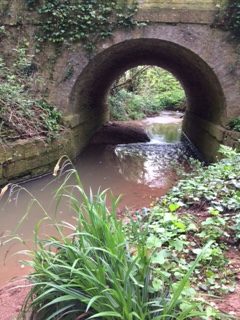 The 2 day event included involvement in a pilot study being conducted by Victoria Priestley at Imperial College London. Somerset surveyors collected water samples from several sites during the survey. Victoria will be examining the samples for traces of otter DNA that have been shed into the water in the form of skin cells, hair, saliva, spraint, urine, mucous or gametes. This environmental DNA (eDNA) can be used to detect species presence and as such, is an efficient survey and monitoring tool for elusive species. DEFRA have approved the technique for great-crested newt surveys and Victoria’s research aims to optimise the method so that eDNA can be an option in the otter survey toolkit.
The 2 day event included involvement in a pilot study being conducted by Victoria Priestley at Imperial College London. Somerset surveyors collected water samples from several sites during the survey. Victoria will be examining the samples for traces of otter DNA that have been shed into the water in the form of skin cells, hair, saliva, spraint, urine, mucous or gametes. This environmental DNA (eDNA) can be used to detect species presence and as such, is an efficient survey and monitoring tool for elusive species. DEFRA have approved the technique for great-crested newt surveys and Victoria’s research aims to optimise the method so that eDNA can be an option in the otter survey toolkit.
15 sites over at least 5 catchment areas were selected and water samples collected on both the Saturday and Sunday together with full descriptions of the sites and water levels.
Use this link to find out more:
